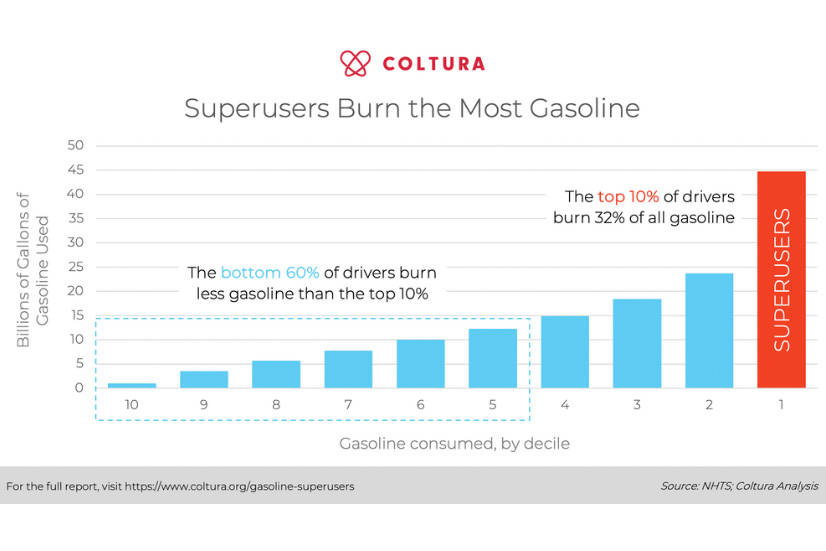Research from alternative energy non-profit group, Coltura, finds that the top 10 percent of gasoline consuming drivers burn nearly one-third of all the gasoline used by vehicles.
According to the study, so-called “Gasoline Superusers” consume more gasoline than the bottom 60 percent of gasoline users combined.
The study found that these gasoline superusers typically use more than 1,000 gallons of gas annually, drive larger vehicles, and drive three times as many miles as the average driver.
“Getting gasoline superusers into [electric vehicles] as quickly as possible is critical to hitting our climate goals because they consume a third of U.S. gasoline,” said Matthew Metz, the lead author of the report and founder and co-executive director of Coltura.
After finding that superusers spend three-times as much of their household budget on gasoline as an average driver, researchers at Coltura believe revising electric vehicle policy to focus on the biggest gasoline users will shift focus to rural, lower and middle-income drivers and away from the wealthier people on the West Coast and in the Northeast who have historically taken most advantage of electric vehicle incentives.
“The current flat [electric vehicle] incentives are being used primarily by higher-income drivers who tend not to use much gasoline,” said Janelle London, co-author of the report. “The people who use the most gasoline are more evenly spread across the income spectrum, and many lower-income gasoline superusers spend upwards of 20 percent of their household income on gasoline.”
In addition to policy incentives, researchers recommended that manufacturers begin to target the gasoline superuser market when they design new electric vehicles. The study claimed that the superuser demographic is more likely to drive pickups and SUVs, and to live in rural areas.
According to the study, Louisiana, Wyoming, and Mississippi are the states with the highest concentration of superusers, while Houston, Detroit, St. Louis have the highest concentration of superusers among U.S. metro areas.


